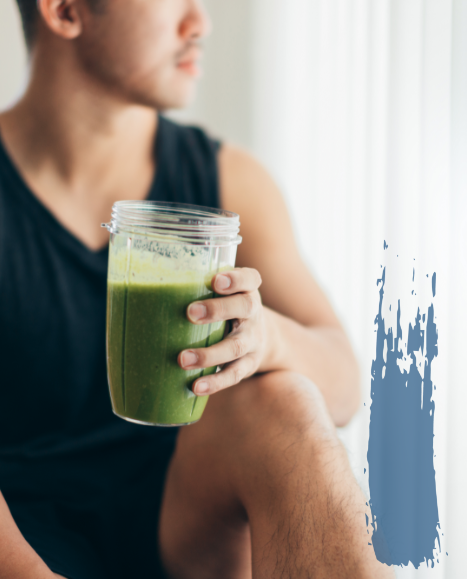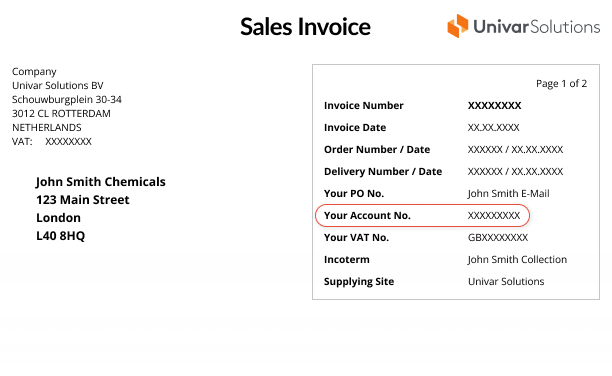We’re here to provide you with more information or help answer any questions you might have. Send us a note and we’ll get back to you as soon as possible.


Consumer trends & opportunities


By Silvi Siddhu, Global Scientific and Technical Manager, Nutraceuticals, Univar Solutions
Digestive health is no longer a trend, it’s a mainstream public health matter worldwide. According to the recent Fortune Business Insight’s Market research report, the global digestive health market size was 37.93 USD billion dollars in 2019 and is expected to grow at a CAGR of 7.9% and reach 71.95 USD billion by 2027. Digestive health issues are prevalent across the globe and are caused by a variety of factors: change in diet, lifestyle choices, ageing, and more. Dietary fiber is probably one of the most common ingredients capitalized worldwide for digestive health issues. The global dietary fiber market is predicted to be 9.74 USD billion dollars by 2025, which is almost double in value compared to 2018, when it was worth 5 USD billion dollars1. As consumer perception of digestive health and its implications on overall health are evolving, they are gradually opening to the possibility of ingredients beyond traditional fiber for gut health. The global pandemic has changed consumer preferences in new ways. There has been a paradigm shift in thinking and consumers today are more inclined to make functional food and supplement purchases based on proven science.




The gut microbiome
Digestive Health is not just limited to the digestive system, and there are a trillion reasons why.
This gut microbiota is made up of diverse microbial communities that produce metabolites such as short chain fatty acids (SCFA), neurotransmitters (like serotonin, GABA), vitamins and hormones. These metabolites are associated with most aspects of health and wellbeing. The Enteric Nervous System (ENS), responsible for digestion among other functions, lies within the gut and that is the reason why the human gut is often referred to as ‘the second brain.’ The gut is also the major entrance for harmful pathogens and one of its roles is to educate the immune system to identify between the good and the harmful microbes. Almost 80% of our immune cells live in the gastrointestinal tract.
Several research studies have linked the gut microbiome and its metabolites to both physical and emotional wellbeing, via multi-organ bidirectional communication. The most frequently researched are the gut-brain axis, gut-immunity axis, gut-skin axis, gut-heart axis, and gut-airway axis. Gut-brain axis is believed to affect sleep, stress, anxiety, and depression. The complex interactions between the gut microbiome and other biological functions present a huge opportunity in supporting holistic health.
The 'biotics'
There is mounting evidence that the gut microbiome is modulated by prebiotics, probiotics and postbiotics. The interconnected web of gut microbiome, immunity, cognition, inflammation, skin, mood, and more has the capability to unearth a lot of opportunities in the world of digestive health. The benefits are limitless and so are the potential innovation opportunities.
Digestive health products have a broad reaching potential to offer multi- functional benefits for overall health across various demographics and various categories in food, pet food, nutraceuticals, and nutricosmetics.
In the past decade, probiotics have had one of the biggest contributions in terms of increasing awareness around the benefits of gut health. Prebiotics have also grown in part based on the foundation laid by probiotics. Functional yogurt and yogurt drinks were early adapters of probiotics. Since then, the use of probiotics has progressed into a myriad of categories including cereal, tea, beverages, cookies, bars, snacks, spreads, and ice-creams. Some recent probiotic launches have included ice cubes in Singapore, mouthwash in China, vegan brie cheese and popcorn in Australia, milk-based formula in China, vegetable butter in Brazil, and cage free eggs in Taiwan. The use of probiotics in categories outside food and supplements has continued to expand. Some new launches on Mintel’s GNPD Database include facial wipes, cleanser, and face wash in UK, Germany, and the US; sunscreen and deodorant in the US; de-stress soap in the Netherlands; and fabric softener in the Philippines with odor-control probiotics. A recent survey of 13,000 consumers across 16 countries conducted by Kerry’s ProActive Health division found that 47% of respondents were aware of probiotics and 25% had used a product containing probiotics over the past six months.
Prebiotics will continue to optimize gut health. A healthy gut microbiota cannot function without an adequate intake of prebiotics. According to Mintel GNPD, global prebiotic claims have gone up by 42% between 2016-2020. However, there is still a lot of untapped potential. As the focus on digestive health continues to intensify, prebiotics are frequently seen in reformulations and line extensions. Increased use of prebiotic fibers like FOS and inulin for sugar or fat reduction to improve nutritional profile, or as clean label fillers, supports their versatility and acceptability in the food and supplement sector.
Mintel notes that even though interest is rising for gut health, there is still a need for more education around the concept of prebiotics and their health benefits. Transparency around the source material for prebiotic ingredients, such as FOS sourced from sugarcane and inulin sourced from agave or chicory root, will help demystify these ingredients and get customers acquainted with the product.
Synbiotics have a great potential to meet the needs of customers looking for multi-functional products. Initially the definition of synbiotics was limited to a combination of prebiotics and probiotics. This definition has steadily evolved with the International Scientific Association for Probiotics and Prebiotics (ISAPP), now defining synbiotics as "a mixture comprising live microorganisms and substrate(s) selectively utilized by host microorganisms that confers a health benefit on the host."
Consumers are increasingly getting familiarized with all the ‘biotics,’ including the newest category of postbiotics. Postbiotics can complement prebiotics and probiotics offering consumers a total gut or total health solution. Postbiotics can be described as metabolites of probiotics. ISAPP defines postbiotics as “a preparation of inanimate microorganisms and/or their components that confers a health benefit to the host.” Customers would benefit from a complete gut health solution that includes pre, pro and postbiotics. The ‘biotics’ represent a significant opportunity in a ‘preventative’ approach to a healthy living.




Customized nutrition for future health and wellbeing
Personalization is a key trend driving all areas of health and wellness. Personalization and digitization in the field of digestive health are rapidly gaining traction. Several smart phone apps have been designed to track regularity, IBS symptoms, stress, and a plethora of other issues to manage overall health. Gut microbiome testing kits are commercially available for microbiota analysis to provide customized dietary recommendations for overall health. In addition, ingestible sensors in capsule form have been developed to diagnose gut related disorders by measuring gases in the gut. Based on their popularity, it follows that consumers are open to the concept of personalized nutrition that is based on genetic testing.
The composition and diversity of microbiota varies between individuals and is dramatically influenced by diet, lifestyle, and drugs (e.g., antibiotics). Brands could potentially capitalize on this and create products that are diet and lifestyle specific. Utilizing microbiome as a biomarker for disease prevention and health promotion has immense potential. The possibilities of modulating the gut microbiome for better health will be a game changer in the field microbiome therapeutics. Could the ‘biotics’ be an alternative to antibiotics? Only time will tell.
Tour the Wellness Academy for valuable insights and resources to help you on your new health and wellness product development journey.



